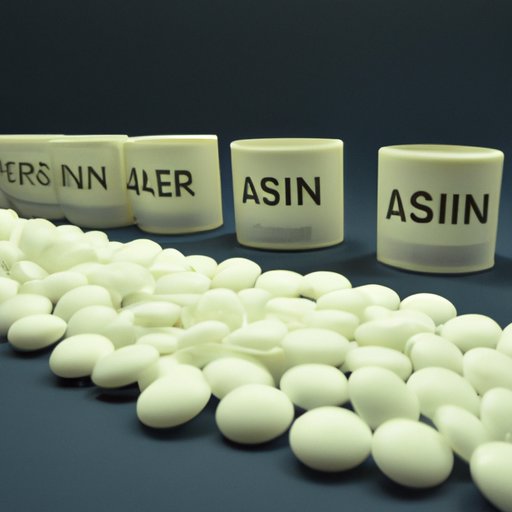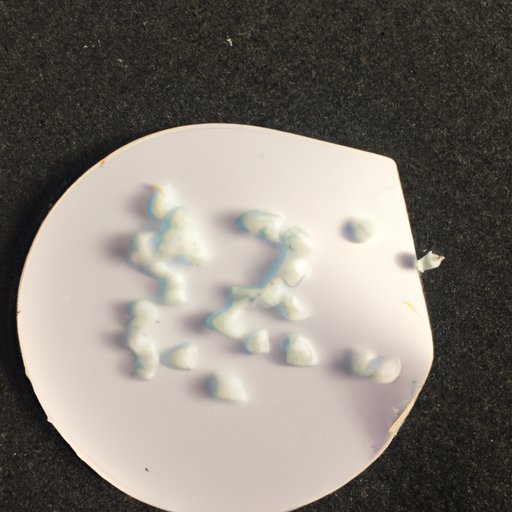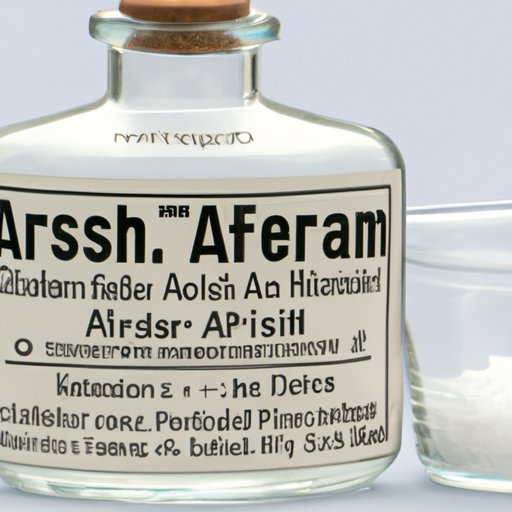Introduction
Aspirin is one of the most widely used medications in the world today. It is commonly used to treat pain, reduce fever, and prevent certain types of heart attacks and strokes. But who was responsible for the invention of this life-saving drug? In this article, we will explore the history, development, and impact of aspirin on modern medicine.
A Historical Overview of the Invention of Aspirin
The story of aspirin begins in the late 19th century, when a German chemist named Felix Hoffmann began experimenting with a compound called acetylsalicylic acid. Hoffmann wanted to create a more effective form of salicin, a naturally occurring compound found in willow bark that had been used as a pain reliever for centuries. After numerous experiments, Hoffmann was able to synthesize acetylsalicylic acid, or “aspirin”, which could be taken in pill form and provided more effective pain relief than natural remedies.
Hoffmann’s discovery was not the first time that scientists had experimented with the properties of salicylic acid. In 1897, a German chemist named Arthur Eichengrün developed a process for synthesizing acetylsalicylic acid from salicylic acid. While Eichengrün did not invent aspirin, his research laid the groundwork for Hoffmann to make his breakthrough.
Biography of the Scientists Who Invented Aspirin
Felix Hoffmann was born in Germany in 1868. He was a student of industrial chemistry and spent much of his career working for the Bayer Company, a German chemical and pharmaceutical company. In 1897, he began experimenting with the properties of salicylic acid and eventually synthesized the drug we now know as aspirin. His invention revolutionized the pharmaceutical industry and made him a household name.
Arthur Eichengrün was born in Germany in 1870. He studied chemistry at the University of Berlin and was employed by the Bayer Company as well. In 1897, he developed a process for synthesizing acetylsalicylic acid from salicylic acid, paving the way for Hoffmann’s invention. Although Eichengrün did not invent aspirin himself, his work was essential to the development of the drug.
An Exploration of the Medical Benefits of Aspirin
Aspirin is a non-steroidal anti-inflammatory drug (NSAID). It works by blocking the production of certain chemicals in the body that cause inflammation and pain. Aspirin can be used to treat mild to moderate pain, such as headaches and muscle aches, as well as reduce fever. It can also be used to prevent certain types of heart attacks and strokes.
Aspirin comes in several forms, including tablets, capsules, and liquids. It can also be taken in combination with other drugs, such as ibuprofen or codeine. Depending on the type and strength of the medication, it can provide short-term or long-term relief from pain and inflammation.

How Aspirin Changed the Pharmaceutical Industry
The invention of aspirin marked a turning point in the pharmaceutical industry. Before the advent of synthetic drugs, medicines were created using natural ingredients like herbs, roots, and plants. With the synthesis of aspirin, it became possible to manufacture drugs using synthetic ingredients, which allowed for greater precision and control over the potency of the medication.
Aspirin was the first of many synthetic drugs to be developed in the 20th century. Its success paved the way for the development of other medications, including antibiotics and vaccines. Today, synthetic drugs are the cornerstone of modern medicine and continue to play an important role in the treatment of disease.

The Impact of Aspirin on Modern Medicine
Today, aspirin is one of the most widely used medications in the world. It is used to treat pain, reduce fever, and prevent certain types of heart attacks and strokes. Aspirin is also used in emergency rooms and medical practices to help stabilize patients with certain conditions. In addition, it is often recommended by doctors as a preventative measure for people at risk of developing cardiovascular disease.

Exploring the Chemistry Behind Aspirin
Aspirin is composed of two main components: acetylsalicylic acid and salicylic acid. Acetylsalicylic acid is the active ingredient in aspirin, while salicylic acid is a naturally occurring compound found in plants, fruits, and vegetables. The combination of these two compounds is what gives aspirin its unique properties. When taken orally, aspirin blocks the production of certain enzymes in the body, resulting in pain relief and anti-inflammatory effects.
A Timeline of Aspirin’s Development and Launch
1897: Felix Hoffmann synthesizes acetylsalicylic acid, or “aspirin”.
1905: Aspirin is launched by the Bayer Company in Germany.
1917: Aspirin is introduced in the United States.
1941: Aspirin becomes available without a prescription in the United States.
1999: The US Food and Drug Administration approves low-dose aspirin for the prevention of heart attack and stroke.
Conclusion
The invention of aspirin was a major milestone in the history of modern medicine. It revolutionized the pharmaceutical industry and ushered in the era of synthetic drugs. Today, aspirin is one of the most widely used medications in the world, providing relief from pain and inflammation, preventing heart attacks and strokes, and stabilizing patients with certain conditions. The legacy of aspirin is still felt in the medical community, and its impact on modern medicine cannot be overstated.
(Note: Is this article not meeting your expectations? Do you have knowledge or insights to share? Unlock new opportunities and expand your reach by joining our authors team. Click Registration to join us and share your expertise with our readers.)
